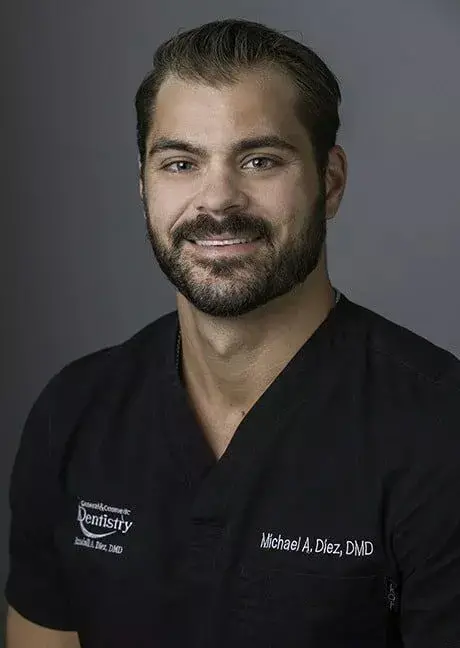Are you considering dental implants in Tampa, FL? If so, understanding the process behind their success is crucial. One of the most vital aspects of this procedure is osseointegration—a term that may sound complex but is fundamental to ensuring your new smile lasts a lifetime.
Imagine a sturdy foundation for your home; without it, everything else falls apart. Similarly, osseointegration serves as that essential support system for your dental implants. It’s all about how well the implant fuses with your jawbone, creating a strong bond that can withstand daily wear and tear.
As we dive into this topic, you'll learn what happens during osseointegration and what steps you can take to ensure its success. From factors influencing the process to cutting-edge advancements in technology—let's explore how to secure longevity for those dental implants you've been dreaming about!
Understanding the Importance of Osseointegration in Dental Implants
Osseointegration is the cornerstone of dental implant success. This biological process involves the fusion of the implant with the surrounding jawbone, creating a stable and durable foundation for your new teeth.
When osseointegration occurs effectively, it allows implants to function just like natural teeth. Patients gain improved chewing ability and speech without discomfort or mobility issues.
The strength of this bond also plays a crucial role in preventing bone loss over time. When an implant integrates well into the bone structure, it helps maintain facial aesthetics and oral health.
Moreover, successful osseointegration can significantly reduce complications down the line. By ensuring that your implants are securely anchored, you minimize risks associated with instability or failure—giving you peace of mind as you enjoy your restored smile.
The Process of Osseointegration: What Happens Inside the Mouth
Osseointegration is a fascinating process that occurs after dental implants are placed. It begins when the titanium post of the implant makes contact with the surrounding bone tissue.
Initially, your body views this new implant as a foreign object. However, over time, it starts to embrace it. Bone cells migrate toward the implant and begin to attach themselves.
This interaction creates a strong bond between bone and titanium, providing stability for the prosthetic tooth. The integration can take several weeks to months, depending on individual factors such as overall health and location of the implant.
During this period, it's crucial to maintain good oral hygiene and follow your dentist's guidelines. This ensures an optimal environment for osseointegration and enhances long-term success rates for dental implants in Tampa, FL.
Factors that Affect Osseointegration and How to Mitigate Them
Osseointegration is crucial for the success of dental implants. Several factors can influence this process, affecting how well the implant bonds with the jawbone.
- One major factor is bone density. Patients with lower bone density may face challenges during osseointegration. To combat this, dentists often recommend bone grafting or other augmentation procedures to enhance support.
- The patient’s overall health also plays a significant role. Conditions like diabetes or autoimmune disorders can impede healing and integration. Therefore, managing these conditions before surgery is essential.
- Smoking poses another risk. Nicotine restricts blood flow and delays recovery time, hindering osseointegration efforts. Quitting smoking in advance of the procedure can significantly improve outcomes.
- Moreover, oral hygiene cannot be overlooked. A clean mouth reduces infection risks post-surgery, promoting better healing conditions around the implant site and ensuring successful bonding with surrounding tissues. Call us to learn more.
Post-Implant Care: Tips for Promoting Successful Osseointegration
- After receiving dental implants, attentive care is crucial for successful osseointegration. Keeping the surgical site clean helps prevent infection. Gently rinse your mouth with a prescribed saline solution or an antibacterial mouthwash.
- Stick to soft foods during the initial healing phase. This minimizes stress on the implant and surrounding tissues while promoting comfort. Foods like yogurt, smoothies, and mashed potatoes are excellent choices.
- Stay hydrated but avoid using straws; suction can disrupt healing at the implant site. Additionally, abstain from smoking and limit alcohol consumption as both can hinder blood flow essential for integration.
- Regular follow-ups with your dentist in Tampa ensure that any potential issues are addressed early on. Adhering to these guidelines will enhance your recovery process significantly and set a solid foundation for the long-term success of your dental implants.
Common Issues with Osseointegration and How to Address Them
Osseointegration is fundamental for the success of dental implants, yet several issues can arise during this process.
- One common problem is inadequate bone density. If your jawbone lacks sufficient strength, it can impede proper integration. Bone grafting may be necessary to enhance stability.
- Another issue involves infection at the implant site. Peri-implantitis can lead to inflammation and discomfort. Maintaining good oral hygiene and following your dentist’s post-operative care instructions are essential for preventing infections.
- Sometimes, patients experience excessive movement in the implant before osseointegration occurs. This could result from premature loading or improper placement by a practitioner lacking expertise in dental implants in Tampa, FL. Ensuring you choose an experienced specialist will help mitigate this risk significantly.
- Smoking has been shown to hinder healing processes and negatively impact osseointegration. Quitting or reducing tobacco use is crucial for better outcomes with dental implants.
Advancements in Technology for Improving Osseointegration Success Rates
Advancements in technology are transforming the landscape of dental implants in Tampa, FL. Innovative materials and techniques enhance osseointegration—the process where bone fuses with the implant.
One breakthrough is the use of 3D printing. This allows for custom implant designs that perfectly match a patient's unique anatomy. A tailored fit can significantly improve stability during healing.
Another exciting development involves surface modifications on implants. Nano-coatings increase the surface area, promoting quicker bone attachment. These enhancements foster better integration and reduce healing time.
Digital imaging tools also play a crucial role. They provide precise diagnostics and treatment planning, ensuring that each step aligns seamlessly with achieving optimal results.
Robotic-assisted surgery offers unparalleled precision during placement, minimizing trauma to surrounding tissues and enhancing recovery outcomes. Such innovations continue to elevate success rates for those seeking dental implants in Tampa, FL.
Conclusion
The journey to successful dental implants in Tampa, FL, relies heavily on the process of osseointegration. Understanding its importance can significantly enhance your experience and outcomes. By being aware of how this process works and what factors influence it, you empower yourself with knowledge that can aid in the longevity of your dental implants.
Maintaining good oral hygiene is crucial for promoting osseointegration. Regular check-ups and following aftercare instructions from your dentist will help ensure a smooth recovery. Stay informed about potential issues like infection or implant failure so that you can address them promptly if they arise.
With continuous advancements in technology, such as improved implant materials and techniques, the success rates of osseointegration are rising steadily. As a patient seeking dental implants in Tampa, FL, embracing these innovations not only increases confidence but also enhances overall satisfaction with results.
Your commitment to understanding and managing every aspect of osseointegration sets the stage for lasting success with your dental implants. Whether you're considering getting an implant or have already undergone treatment, staying proactive will make all the difference in ensuring a healthy smile for years to come.
For the best dental care, visit General and Cosmetic Dentistry of Tampa at 5010 Gunn Hwy, Tampa 33624, or call (813) 960-5869, or 3112 West Kennedy Blvd, Tampa 33609, or call (813) 874-5869.


